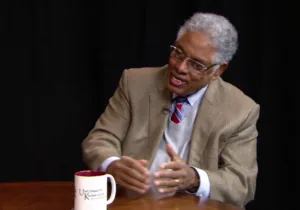The recent failure of Silicon Valley Bank (SVB) has investors and private citizens concerned that we are at the start of another financial crisis as in 2008. However, those fears are likely unwarranted; SVB collapsed because of its heavy exposure to the technology sector as well as its investment decisions, borrowing short and lending long, which made it unable to withstand rising interest rates. It is very likely that other banks with similar portfolios could follow suit, but there is little chance of contagion spreading through the entire financial system.
The FDIC’s decision to cover the losses of SVB’s large account holders has left many Americans wondering what legislation could stop this incident from repeating. Yet the answer is complicated because SVB did not break the law and more than half of its securities investments were in U.S. government and agency bonds. Even so, the FDIC insurance regulations need to be revamped so that taxpayers will not be left footing the bill next time.
The 2008 global financial crisis was instigated by plummeting house prices and borrowers unable to make payments. The banks foreclosed on the homes, which were then less valuable than the mortgages. The crisis then affected every corner of the financial ecosystem because collapsing mortgages drove down the value of mortgage-backed securities, which many banks, financial institutions, and pensions used as the bedrock of their portfolios.
SVB had invested heavily in longer-term mortgage securities with more than 10 years to maturity. Unlike in 2008, these mortgages were neither toxic nor going into foreclosure. The problem for SVB, by contrast, was that these securities were purchased when interest rates were exceptionally low. Then, once the Fed began raising rates to fight inflation, SVB’s average bond was yielding only 1.79%, while the 10-year treasury yield was about 3.9%. If SVB wanted to sell these bonds, they would have to do so at a discount, to compensate the buyers for the low rates. As a result, over 40% of SVB’s portfolio, $91 billion worth of bonds, were valued at only $76 billion.
Under the law, the losses on these assets do not have to be charged against the balance sheet until they are sold; had the bank held them until maturity, they would have been fine. The problem was that when word got out that the bank was facing difficulty, many depositors demanded their money at the same time in a classic “run on the bank.” Within twenty-four hours, the Federal Depositor Insurance Corporation (FDIC) stepped in, taking control of the bank’s assets.
Historically, the limit of FDIC insurance was $250,000 and deposits held in accounts in excess of this amount were not protected. However, during the global financial crisis, the number of accounts that would have gone up in smoke was so large that the FDIC agreed to make every depositor whole. In 2010, Congress officially granted powers to FDIC to intervene in bank insolvency if believed to be a threat to the American financial system. The 2010 law not only extended the protection to large deposits, but also to credit obligations of the bank. The FDIC is now covering all of SVB’s accounts, even those running into the millions. Because a number of tech companies were using SVB as their primary bank, 90% of the accounts were in excess of $250,000. The Federal Reserve has also become involved, making more than $300 billion worth of emergency loans to the FDIC holding-company which now controls SVB, as well as loans to other banks in need of liquidity.
By covering all the bank’s losses, the FDIC has removed any risk for banks that make poor decisions with depositors’ money or recklessly bet against the market. In the insurance industry, this is called a moral hazard because people who know they are insured take fewer precautions. The genie is out of the bottle; when the next bank fails there will already be a precedent that the Fed will step in. Ultimately, this means that the FDIC is now insuring the $17.6 trillion worth of deposits across all U.S. commercial banks and this insurance is from U.S. taxpayers.
A number of lawmakers are calling for tighter regulation of banks. However, examining SVB’s collapse reveals that, while rising interest rates and a portfolio heavily skewed toward long-term bonds were the final blow, systemically the issue was the bank’s exposure to the technology sector. The tech industry is known for high-debt and low-revenue for long periods of time, hopefully followed by an explosion of the stock price. When that sector declined, so too did the bank. This raises the question: should the government require banks to diversify their portfolios and spread the risk over a variety of industries? While the lack of diversification looks like an obvious mistake, it was arguably the right strategy. SVB specialized in technology investment because this was their area of expertise. Splitting their investments into other industries, in which they had no knowledge, would have been a terrible idea. Further, in our free-market system, do we really want the government mandating what private companies, even banks, can and cannot invest in?
One recommendation would be for an FDIC overhaul. Banks would still be permitted to invest as they see fit, but FDIC would only cover the accounts of individuals, not companies, in excess of $250,000. This would protect people’s life savings, while not committing U.S. taxpayers to cover the losses of private banks or private companies. Additionally, by transferring the risk from the taxpayers back to the banks, hopefully, banks would be encouraged to manage their investments more wisely.






 Sponsor a student for Christianity & National Security 2024
Sponsor a student for Christianity & National Security 2024